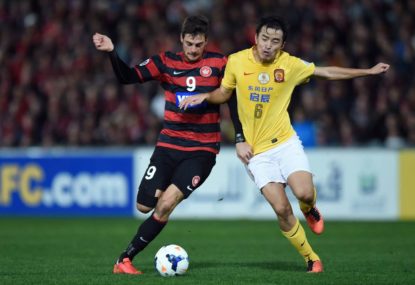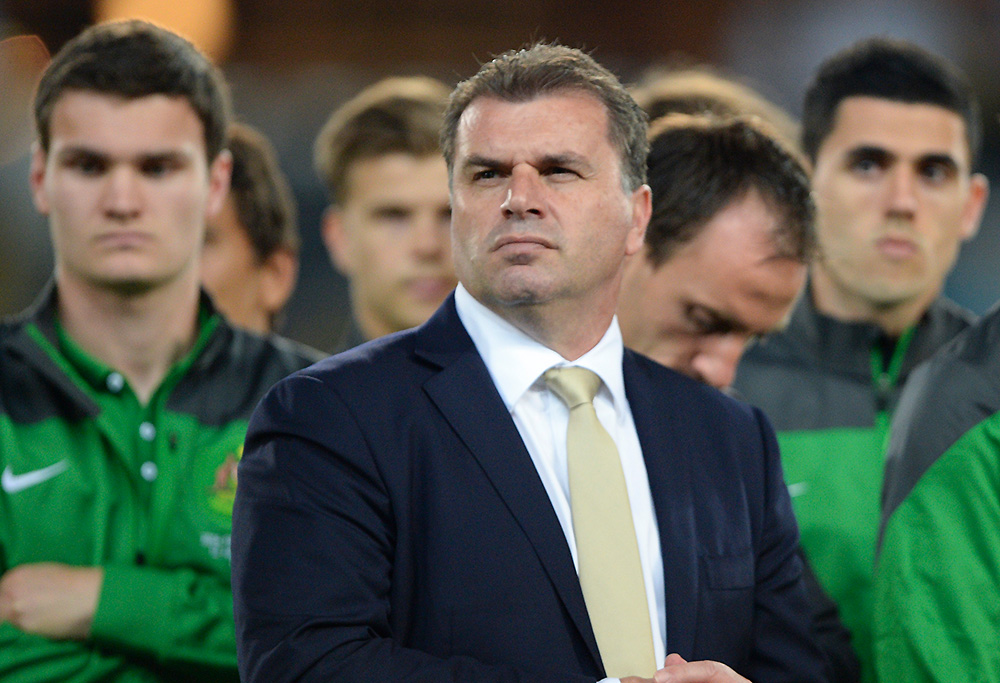Expert

The life of a footballer is, quite literally, a mad dash for glory before their legs give way.
They can play for 20 years, if they’re lucky, and then it’s all over. During this two-decade period, the glory gained can be measured in many ways.
Winners medals, perhaps, for those lucky and talented enough to have them.
National caps, even they might be tallied up, each one another badge of pride pinned over the heart. And then, of course, there’s the bank balance, and exactly how swollen it is once the boots are unlaced for the final time.
That last point has become, with the emergence of a Chinese Super League so obscenely moneyed – and so willing to offer said cash in hot, eager fistfuls – perhaps the most important in modern football. Money runs through the game, with huge arterial networks pumping the liquid coin, and players catching a ride from club to club, dizzy passenger-cargo on this worldwide pecuniary waterslide.
The players are soaked in cash, too, on the way, and the sort of astronomical transfer fees and salaries being offered with alarming regularity by numerous Chinese clubs has had a disruptive effect on world football. The A-League is already a league from which the CSL has liberally sourced, this is a process that is likely only to intensify.
So, when a young, promising player, nurtured in the A-League and on the verge of a lovely professional bloom, decides to make a grand move abroad, what league, or team, will be first on his wishlist? It’s hard to imagine a world where a player like our hypothetical subject would choose to forego the old, established dreams of kitting up for Liverpool, Manchester United, Barcelona or Juventus for new dreams of kitting up for Shanghai Greenland Shenhua, Guangzhou Evergrande TaoBao or Hebei China Fortune.
But why, our rhetorical lad might ask, would I choose to tread the perilous path toward dusty European dreams, one that twists and lurches violently, with no guarantees except for an acute degree of difficulty? Why not dip my young feet in the golden pools of the CSL now, and earn many times what I stand to make in England? No, no, this is a sentiment that still seems too corrupted to be true.
Except, when Oscar, Chelsea midfielder and a footballer who is, at 25 years of age, on the verge of entering his prime years, chooses to ply his trade in China instead of Europe, the sentiment throbs horribly as a near and present reality.
Perhaps the issue concerns less the hoovering up of young starlets, and more the luring of established, perhaps slightly insecure players. Oscar has not featured often for Chelsea under new manager Antonio Conte, and received a hero’s welcome in Shanghai this week. For him, the exorbitant salary combined with his drifting away from first-team thinking at Chelsea was enough to convince. Oscar would certainly have had offers from other clubs in Europe.
The Brazilian’s transfer has unquestionably confirmed that China is entering a new, formidable period of influence in football. Money talks, and from China it can be heard from roaring from afar. As far as this affects the A-League and Australian football, well, there have been 36 Australians who have played in the CSL, and as of July 2016 there were seven Australians active in the league, with six of them having earned caps at national level.
Rumours that Tommy Oar, Robbie Kruse and James Holland will soon be joining Trent Sainsbury, Matt Spiranovic, Apostolos Giannou et al in China mean that the CSL is becoming the professional home for a sizeable proportion of Ange Postecoglou’s Socceroos selection pool.
Postecoglu urged the likes of Kruse to seek increased playing time if they wanted to remain a relevant option for the national team. That new pastures are being sought in the CSL might not be exactly what Postecoglu had in mind. Are Australian players better off playing regularly in China than they are in lower European leagues, or indeed in the A-League?

The standard of the Chinese league, certainly at the very top, has risen rapidly over the last ten years, predictably as investment has soared. Guangzhou Evergrande have won two of the last four AFC Champions League titles, in 2013 and 2015, with Chinese clubs having made the final just three times from 1985 until 2013.
The continental bragging rights, at club level, have long belonged to Korean, Japanese and Gulf nation clubs. Thanks to their financial tailwinds, Chinese football has unsurprisingly made more progress in Asian club competitions than Australian football has.
When Western Sydney beat Guangzhou Evergrande on away goals in the semi-finals of their victorious 2014 Asian Champions League campaign, it was an upset.
But it’s hard to measure the health of the league by looking at the juggernaut spenders, because a tilted impression emerges. Guangzhou Evergrande are a success story, and have won the last six domestic titles. They spend the most, and hog many of the best Chinese players. The rush to compete with the likes of Guangzhou has seen the league turn increasingly volatile, with pay disputes common – Didier Drogba and Nicholas Anelka left the CSL under the cloud of such an incident – and Trent Sainsbury spoke last year about how it’s very difficult to feel any trustworthy sense of professional security there.
The results of the Chinese national team must also be used as a yardstick for Chinese footballing health. Over the past two years, China has registered notable wins in competitive fixtures over Oman, Saudi Arabia and Qatar, although have lost to Syria and Uzbekistan, as well as losing to Kazakhstan in a friendly, and drawing with Haiti.
A lot of these defeats are to nations with issues more pressing than football on the national agenda. The last time a Chinese player won the CSL Most Valuable Player award was 2007, the same year of the last Chinese league Golden Boot winner.
Only two of the last nine CSL Managers of the Year have been Chinese, and Marcelo Lippi is the current national team manager. As to exactly how much the CSL has helped usher China into a more generally robust footballing situation is highly debatable.
So, what Australia has bubbling and fizzing seven-and-a-half thousand kilometres above us is a league that is growing faster than any other, in a country where the second tier of football entered the 2016 season as the third-highest spending league in the world.
The CSL is already a factor with which all clubs, including in the A-League, must reckon, and as it swells, spewing forth Yuan and fiendishly bidding, the reckoning only grows in scale.